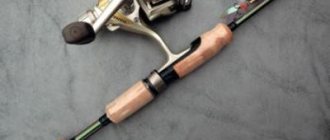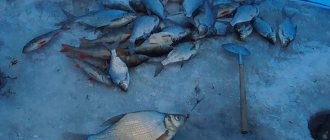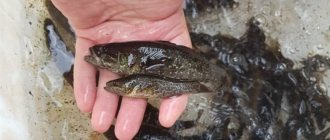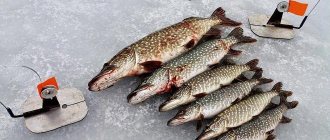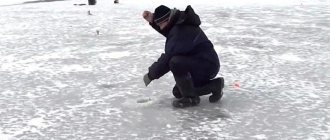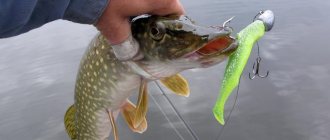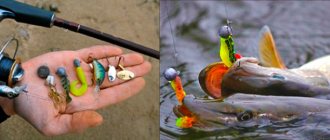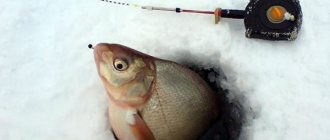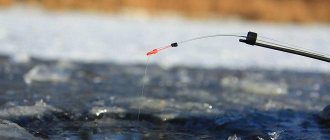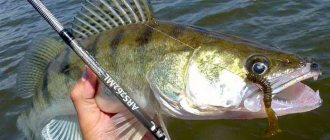Ice fishing for pike with a jig in winter (the ancestor of which is the well-known jig), unfortunately, has not yet become particularly widespread. However, having a supply of artificial silicone baits that are actively used in the warm season, why not try them in ice fishing? Practice shows that catching pike with a jig in winter from ice is no less interesting than fishing in warm weather. Moreover, this method will be interesting for both beginner winter fishermen and experienced fishermen.
Winter jig from ice. Pike
In order for pike fishing to be successful, you need to know the behavioral characteristics of the main predator of freshwater bodies. At the very beginning of winter, when the fish are still very active, it is better to ice fish closer to the shore. It is here that small fish gather, which the pike feeds on. It is also necessary to stay close to the shore for safety reasons, since the ice is still thin. As a rule, pike hunting during this period is the most effective with jigs and other types of bait. After the ice hardens, the predator remains active for some time, and then becomes slower and more picky about the bait.
The best pike fishing is with a jig in winter in calm, cloudy weather. There are very good bites when it snows. The worst bite is on frosty sunny days.
Sometimes pike completely ignore any bait. The fish becomes more active towards the end of February, as it prepares for spawning and the “zhoring” begins. Here, as they say, “fisherman, don’t yawn!”
Catching pike perch with a jig from a boat
Separately, I would like to mention catching pike perch with a jig from a boat. This method of fishing ensures accessibility to almost any point in the reservoir. If the reservoir is large, then this is a very important advantage, especially when autumn comes and the pike perch moves further from the shore and lies in holes.
Small pike perch usually stay in schools, which usually consist of 10-50 individuals. Therefore, if you catch a pike perch, you should fish this point well.
Often several pike perch are caught in one place at once, and along with them bershi, which often end up in the same school with pike perch. To ensure yourself a catch of pike perch from a boat, you need to find various depressions in the reservoir, depth differences or edges. In such places, concentrations of pike perch are almost constant. But, of course, it’s quite difficult to do this without an echo sounder.
Catching pike perch from a boat will allow you to fish all such promising places, while this is often simply impossible to do from the shore. I prefer comfortable boats, from which it is very comfortable to fish; aluminum boats can rightfully be considered one of the most comfortable. They are light, durable, roomy and very comfortable. I have exactly this boat and I am very pleased with the comfort of fishing from it.
Catching pike perch from a boat video
Tackle
In essence, the gear for ice fishing in winter is not much different from summer: small rigs, soft silicone bait. The diameter of the fishing line for pike or pike perch ranges from 0.3 to 0.35 mm. When fishing for pike, a prerequisite is the use of a soft steel leash. It will help protect the tackle from pike teeth. The next steps are as follows.
- tie the jig head to the end of the fishing line;
- A silicone bait is attached to the hook. Choose it so that it matches the hook number.
About
Fishing rod equipment
So, to catch pike perch you will need reliable and strong tackle. The equipment for pike perch is not particularly elegant - it makes no sense to use thin fishing lines. A fanged fish at great depths and in the dark (especially since the best time for fishing is night, dusk or dawn) will not be able to distinguish a thick monofilament in the water). Another important factor is the convenience of the gear. The basis of tactics is a constant search for points. In a day you need to drill dozens of holes and fish them. In addition, the fisherman is forced to move a lot. The working hang of the tackle is long, since you always have to fish at fairly large depths, usually from 5 to 15 meters (usually 7-12). Therefore, the fishing rod should be easily retracted for transition and quickly brought into working condition.
Rod
The choice of a rod for winter tackle for pike perch must be approached with all responsibility. Catching many other types of fish does not require high performance characteristics of a winter whip - it is only involved in guiding and partly in hooking. The pike perch has a very strong bony mouth. To cut through it, a strong and elastic hook is required. A weak whip will simply break; too hard a whip will break the fishing rod rig due to lack of elasticity. The bite of a large pike perch sometimes happens sharply and unexpectedly, from acceleration. The tackle must remain stable. A fishing rod is not required only when fishing with hooks - there the hooking is carried out by the fishing line.
A good option is a special fishing rod for winter trolling. Such carbon fiber winter fishing rods for pike perch (and pike) are obviously made taking into account all the features of fishing. Fiberglass rods are also suitable, they are heavier and cheaper, but it is less convenient to work with them for a long time.
Many anglers make their own equipment for winter fishing for pike perch. As you already understand, the main thing in such a fishing rod is the whip and the rings. The handle and reel seat can be made in any design; a simple wooden stick and electrical tape will do. The main thing is the whip. The whip is purchased at the store. An elastic feeder quivertip or the upper part of a summer spinning rod will also work. Of course, in extreme cases, if there is no opportunity to make or buy good tackle, you can get by with the simplest option - a rough fishing rod with reels. It is inconvenient to work with such gear during active search. Imagine for yourself - every time you go, reel out 10 meters of fishing line onto the fishing rod reel, and then unwind it back. And so dozens (hundreds) of times.
The caliber of the rod depends on the fishing method and the weight of the bait. An experienced fisherman always has a whole set of tackle in his box, pre-configured and matched to the weight of the spoon or balancer. The requirements for fishing rods for winter baits and jigs are the same. Jigs for pike perch are large and heavy, especially for currents.
fishing line
The best fishing line for winter walleye fishing is a good fluorocarbon or fluorocarbon line. Line requirements:
- Diameter 0.25-0.35 mm, depending on the caliber of the tackle.
- Lack of memory.
- Resistant to abrasion and ice damage.
- Low elongation - do not forget about powerful, high-quality hooking.
An excessively soft fishing line at great depths will not allow it to penetrate the mouth of a predator due to its stretchability. Braid and lines are rarely used for pike perch in winter; in the cold they become tanned and stick to the reel. The best solution is high-quality winter fluorocarbon monofilament. Leashes are not used for pike perch; the bait is attached directly to the fishing line with a knot, loop or through a fastener.
Nod
There are many varieties of nods for winter fishing rods for pike perch; each angler uses something different. You need to understand that the fanged one, especially in winter, prefers low-amplitude, smooth play with long pauses. Therefore, the gear guard should not perform parasitic spring vibrations. The fall of the bait must be smoothly extinguished at the lowest point so that it does not bounce, but slowly fades in its downward movement. Previously, metal spring nods or lavsan, plastic strips from PET bottles were used on fishing rods. Now the best option is to use a frost-resistant silicone tube. Such a nod does not dull in the cold. Silicone nods can be found at a fishing store. If you have the required length of tube, such a nod for pike perch can be done with your own hands in a couple of minutes.
What to catch pike perch in winter
Despite its aggressiveness, the fanged fish cannot compete with pike and feed on large fish. Although the striped one has a huge toothy mouth, its throat is narrow. Pike perch prefers to hunt for relatively small, narrow-bodied fish. Gudgeon, loach, goby, bleak, verkhovka, minnow, dace, sprat are the basis of the diet (depending on the reservoir). Accordingly, when fishing with live bait or girders, as well as as dead fish, it is better to use these breeds.
Among artificial baits, fishing for pike perch in winter using spoons, balancers, amphipods and rattlins stands out. Interesting solutions such as voucher (column), bulldozer, and mormobles are successfully used. No one has canceled special heavy pike-perch jigs for replanting sprat or pieces of fish. Read more about winter pike perch baits. A small number of anglers successfully catch pike perch in winter using edible rubber and silicone using a vertical jig. The baits used are vibrotails, twisters, slugs on a jig head, a Cheburashka sinker or a lead rig. Pike-perch does not cut the line on the tackle like pike, so a leash is not used. Lures, depending on the equipment, are attached directly to the fishing line.
Reels
Ideally, a winter fishing rod for pike perch is equipped with a reel. Fishing is done at depth, the fisherman needs to constantly move, which means he often winds and unwinds the tackle. A reel for winter fishing for pike perch is essential. You can use the following options:
- Cheap plastic ice fishing reels with an open spool. You should choose open reels with a diameter of 50 mm, preferably with a release button. In general, it’s great if such a simple design has a friction clutch.
- Good winter reels for trolling. Such solutions are already more expensive, but this is exactly what is needed. Such devices are specially adapted for winter sheer trolling: there is a friction brake (which allows you to use thinner fishing lines and use American-style fishing with a rod), the drum is large and does not freeze when wet.
- Small spinning reels or multipliers. Very comfortable too. But due to their high cost, they are not very popular.
Winter jig technique from ice
After the tackle is prepared, drill a hole and begin fishing the bottom layer with a jig head with silicone bait. If the bottom is silted or there are no bites, they resort to tricks, slightly modifying the tackle, changing baits and animation techniques.
The bait is twitched up and down, causing it to play. Here are some options for playing when fishing from ice:
- Lower the bait to the bottom and move it there.
- Raise the jig bait in steps of 200-300 mm (for pike this is the most acceptable option), take a short pause and release, and repeat this cyclically.
- “Tossing” with small jolts, which forces the silicone to move (as far as possible) in the horizontal plane.
If fishing with an ice jig is done in still water, then the angler is limited in his actions due to the small size of the hole. If there is a current, then he fishes a larger area due to the fact that the gear is carried some distance. However, there is no need to go to extremes. If the tackle is carried far from the hole, you may miss the bite.
Another option to make vertical fishing a little more varied is to drill a hole above the underwater slope and then “jump” down its ledges.
Features of fishing with jig in winter - fishing for pike, pike-perch, perch
Catching pike with a jig in winter
Fishing for pike in winter in this way is especially effective in snags or where it is easy to lose the bait. The fact is that when jigging, the silicone hits the branches more often with the jig head, which reduces the frequency of hook hooks.
In addition, silicone is made from cheaper baits, so even if lost, its loss is much less than what happens when using, for example, balancers or spinners. Standard jig heads are used in pike tackle.
They work well in snags. You can use special winter jig heads, in which, for example, the hooks almost do not protrude beyond the body. The color of silicone has almost no effect on success when hunting for pike, but high-contrast colors are a little more catchy.
Wiring the vibrating tail consists of shaking it near the bottom and at a distance of 20, 50 and 70 cm from it. The vibrating tail is held at each of the indicated heights for 3...5 seconds. Having raised the bait half a meter or higher, they periodically drop it to the bottom and keep it there for 2…3 seconds. pause, then raised to the height from which they were dropped. If the vibrotail is placed on a jig head weighing 12 g, then they work with it a little differently:
- smoothly, but with increasing speed, raise to a position of 30...50 cm from the bottom; - hold for 3...5 seconds. poizou;
- lower the silicone, stop it when 5...10 cm remains to the bottom;
- maintain a pause of 5...7 seconds;
- raise 30...40 cm up;
- a short pause and dropping the bait to the bottom.
Working with a twister is reminiscent of vertical trolling. The difference is in the duration of the pause, which is maintained from 2 to 4 seconds. This silicone is best used during currents. Octopuses (octopuses) are played slowly, even sluggishly.
This is quite enough to give movement to all their tentacles, which is enough to seduce the pike. Usually the bait is raised 10...20 cm from the bottom, dropped to the bottom, and paused for 5...7 seconds. Then they play like a jig.
Winter fishing for pike perch with jig
In winter, pike perch are caught on jigs at various depths. Taking this into account, they use jig heads for pike perch in winter of different weights (14...26 g). Take them with you at least 2…3 pieces, since there is a possibility of the gear breaking during fishing.
Although this rarely happens when hunting fanged animals in winter. The preference for a jig head is explained by the fact that when vertical jigging with a Cheburashka there are always more problems. Very often the fishing line gets caught on the hook. Which affects the quality of the bait and the catchability of the gear.
For zander winter jig, a short rod is suitable - 40...60 cm. It must be rigid. You can make it from a steel rod. It is good to place at least one pass ring along the length of the form, and a tulip at the end of the top. For reels, many fishermen recommend using an inertia reel of the “Nevskoy” type, only the size should be smaller.
They say that working with it is much more pleasant and convenient than with a spinning rod, which strongly twists the line, which affects the fishing process. The requirements for the reel include easy movement and a reliable brake during reverse travel. The fishing line for pike perch should be thinner. In addition to the fact that this frightens the predator less, it does not sag so much in the water under the influence of the current, which allows you to more accurately hit the bottom with bait.
See also: Winter vents - types of vents and how they work
It is better not to use wicker - it freezes quickly and severely and this creates many problems. It’s better to take a 0.17 mm monofilament line, which is enough to reach even 6-kilogram pike perch, helping by adjusting the reel. 0.17mm may seem small to some fishermen.
You can, of course, increase it, but the result will be worse. The latter is partly due to the fact that thicker fishing lines require heavier weights, and this is not the best option for pike perch. It is advisable to place a leash on the tackle. It does not scare away the pike perch, but it will protect it from pike bites, which happen often.
The leash is well thin - it can be made using, for example, soft wire from a telephone cable. The length is 10 cm. The silicone bait is attached to the leash through a swivel with a clasp.
The technique for catching pike perch in winter with a jig is simple. You just need to do all the actions clearly and consistently. For example, on the current, where pike perch are usually caught, everyone does this:
- launch the bait into the hole;
- step back and pull a little line from the reel, enough so that there is about a meter of it between the hole and the tip of the rod;
- raised 15...20 cm above the bottom;
- They drop sharply to the bottom, giving the line slack.
If there are no bites, lower another meter of fishing line. By lifting the bait, you allow the current to carry it away from the hole. At the same time, the bait is delayed, forcing it to move in steps. Then they begin to jig towards the hole, using summer jigging tactics - they reel in with a reel and force the silicone to move in steps.
Be sure to take breaks. What fishermen have noticed is that pike perch bites occur more often when the bait is gradually released from the hole. For pike perch hunting with a winter jig, high-quality wiring is important. You can achieve this by choosing the right jig head. Taking this into account, you need to have them with you in different weights with a maximum difference of 2 g.
In this case, the load is selected so that the pause that is made during retrieving is real - without any movement of the bait under the influence of the current.
This attention to pauses is explained by the fact that most of the fanged attacks on the silicone occur precisely during such a period or immediately after it. The pause length is sufficient: 2…3 seconds. If you make it shorter or longer, the result is worse.
Pike perch bites during the described game are always sharp - you feel a blow or jerk. It is impossible to miss it. The problem may be when hooking; and not in the pike perch, but in frozen fingers, which in the cold lose sensitivity and the ability to clearly hold the reel.
In this case, a good brake in the reel will help - a ratchet is not suitable. The most successful period for catching pike perch in winter with a jig is the last ice. Moreover, the “last” it is, the more effective the fishing. There is a chance of getting caught by a school of pike perch, which ensures success. The procedure for fishing promising pits where pike perch winters:
- first they jig at the entrance to the pit in holes arranged in the ice in a checkerboard pattern;
- the distance between holes is 5...6 m;
- if there are no bites, move to the side edges, then to the exit from the pit;
- then they break through the hole itself; This place is worse than others in terms of catch.
In winter they jig on fanged fish with silicone baits: twisters, vibrotails, silicone worms. Naturally, those with a narrow body and a color reminiscent of the fish that pike perch feed on. Lures that fishermen make themselves can be effective. For example, a tuft of goat hair placed on the hook of a jig head.
Winter fishing for perch with jig
Winter jig fishing for this predator differs from those described above only in the size of the jig heads and silicone baits used. The former usually weigh about 1 g, and the latter, due to the impossibility of buying the appropriate size, are cut with a sharp knife made from large silicones, for example, worms.
They catch perch with a jig from one hole, lowering the bait to the bottom and giving it a game: lift it, hold it, drop it, shake it both in the thickness of the ice and at the very bottom. At the same time, there is a certain rule that allows you to get the perch as interested in your bait as possible.
The latter should not be removed from the bottom by more than 3...5 cm. The wiring itself, which is most effective for minke whales, is performed in the following sequence:
- lowers the bait into the hole to the bottom;
- raise it with high-frequency vibrations by 3...5 cm;
- hold on poise for 4...6 seconds;
- lower the bait to the bottom, making high-frequency oscillations;
- again pause for 4...6 seconds;
- lift the bait from the bottom by 3...5 cm and sharply throw it back;
- again a pause, but now shorter - 2...4 seconds and then they repeat everything.
Source
Winter jig heads
For ice fishing, you can use jig heads of any shape: from classic spherical ones to the most exotic ones: “bananas” and “horseshoes”. It's just a matter of availability. However, given that fishing is carried out in a vertical plane, heads with a wider amplitude of play will work better. The same oscillating and swinging jigs or modified ones with a disk.
About
Lures
The main feature of ice jigging, which differs from summer fishing, is that the bait works only in the vertical plane. Fishing with balancers and winter lures has been well studied, so many anglers are often cautious, preferring familiar gear rather than jigs. Therefore, let's look at this in more detail.
Silicone bait has these advantages.
- low cost;
- high level of catchability;
- possibility of self-production.
The disadvantage of a silicone jig is its short service life. Predatory fish, including pike, spoil the bait, sometimes simply biting it. Many silicone baits “dull” in the cold and lose their ability to play. Therefore, for ice fishing, devices made of soft jelly-like silicone are used.
The winter predator is a demanding and capricious client, paying attention only to attractive edible bait. Often, in order for the bait to play better, a 2-3-centimeter polyvinyl chloride disk is attached to it, which swings the bait, leading it to the side (you could see its version in the video posted just above in the article). The ideal option is when the bait creates the impression of a small fish that moves near the bottom with periodic additives.
Silicone slugs
A good result is obtained with slug baits, which outwardly resemble fish feeding in the bottom part of a reservoir. Small vibrating tails can be used for the same purposes. The pike actively reacts to the vibrations created by this bait and attacks it.
About
Choosing gear for spinning jig fishing for pike perch
You definitely need to start with choosing gear. If you have already decided on this or know what gear is needed for catching pike perch, then you can safely skip this section and move on. For those who need help, I will briefly explain all the requirements for gear for catching pike perch with a jig.
Rod
Rod length. The length of the rod for catching pike perch with a jig from the shore is best suited to be longer. Such a rod, first of all, will allow you to cast longer, which is often very important when fishing for pike perch. Choose a rod with a length of 3 meters or more.
When fishing from a boat, long casting is no longer so important, because you can get closer to the fishing point at the distance of maximum casting of the bait. In addition, it is extremely inconvenient to operate a long spinning rod from a boat, and therefore the best option would be spinning rods 2.7 and even 2.1 meters long.
Test and build of spinning rod . When choosing a spinning rod action, choose an extremely fast or ultra-fast action. This particular formation is ideal for catching pike perch with a jig. For those who have already caught pike perch, it is far from a secret that pike perch bites are sometimes easily confused with the usual touching of the bait to the bottom or touching algae, etc. A spinning rod with a fast or ultra-fast action will allow you to feel the bait and pike perch bites well. The test rod for jig fishing for pike perch is usually in the range of 10-40 grams and this is quite enough.
Coil
Here, the undoubted leadership in terms of price-quality criteria undoubtedly belongs to inertia-free reels. They are very easy to use, comfortable, have excellent casting characteristics and do an excellent job of playing. When choosing a spinning reel for catching pike perch with a jig, you should pay special attention to its quality so that the reel, at the most important moment, does not become an obstacle to the successful landing of a predator. It should have a capacious spool and a good clutch that will absorb the jerks of the pike perch when fishing, thereby preventing the line from breaking.
fishing line
There are 2 options that can be applied. One of them is economical and is quite suitable for catching pike perch with a jig, but is not so practical, the other is more expensive, but it is ideal for this purpose. So, let's look at both options in turn.
- Monoline . Conventional fishing line is quite suitable for catching pike perch, but has a number of disadvantages, such as the ability to remember the shape of the reel and twist, and has high elongation, which leads to a significant decrease in the sensitivity of the gear.
- Braided fishing line . This line has the best qualities and is able to preserve the sensitivity of the gear as much as possible, thanks to which even the weakest pokes and grips of a predator will be transmitted to the angler’s hand. Such sensitivity, of course, can increase both the catch and the comfort of fishing. Its only drawback, which is completely unrelated to fishing, is its price, which is significantly higher than the price of regular fishing line.
The use of leashes is also a very important element. The leash should be thinner than the main line. For a leash, it is quite enough to use about 1 meter of ordinary monofilament fishing line or the same braid, the breaking load of which will be less than the breaking load of the main fishing line. Using a thinner leash has several advantages, such as:
- when hooked, your main line will not be damaged, but only the leash will come off;
- a smaller line diameter will be less noticeable to the fish and the number of bites will increase.

